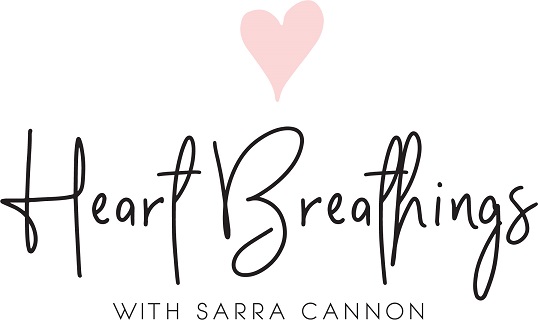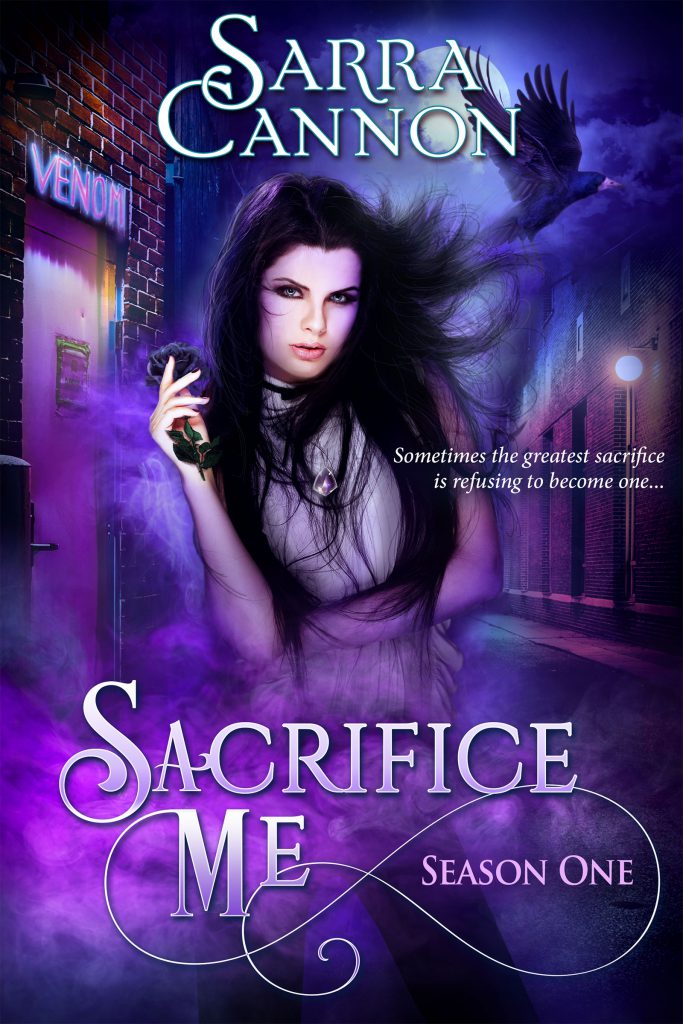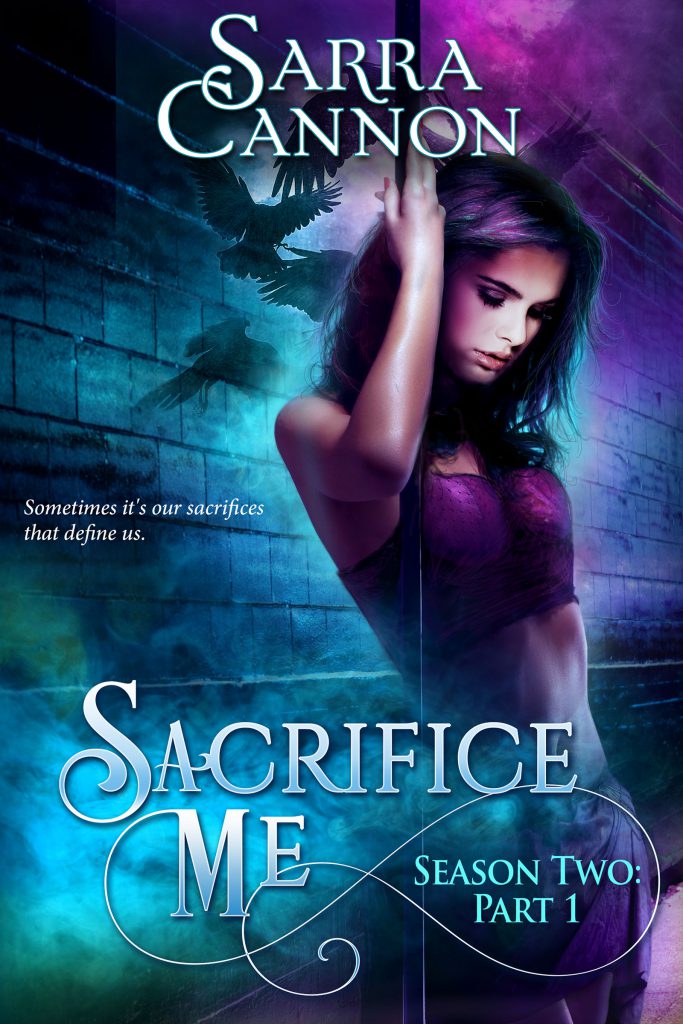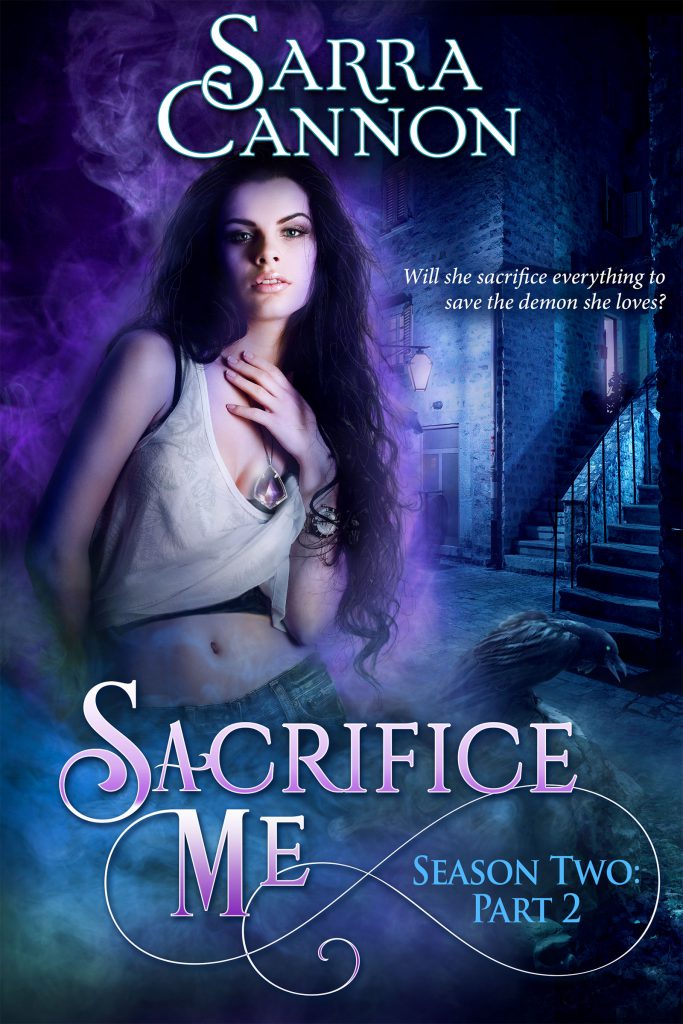
February 4, 2021 by Sarra Cannon
What is a serial? When it comes to writing fiction, there are a lot of differing opinions on what makes up a serial vs. a series, what the structure of a proper serial should be, and whether a serial has to end on a cliffhanger.
In today’s video, I’m going to go over my opinions and thoughts on writing a serial vs. a series. This is a follow-up to my entire video series on How To Write A Series, which I hope you’ll watch if you haven’t yet. There is a lot of good information there about the different types of series, series structure, and how genre can affect your series.
Watch Today’s video to hear my thoughts on the differences between a series and a serial.
Before we can get too deep into this discussion, we need to define a serial. Only, providing an exact definition for this is a bit more difficult than you would think. There doesn’t seem to be an industry-standard definition for serial, so I’m going to attempt to define it in a way that makes sense for me.
A serial is a story that is told over multiple installments, often with a cliffhanger or hook ending that leads into the next installment.
In the same way that there are different types of series, there are also two common types of serials: Dynamic and Episodic.
Dynamic Serial
In a Dynamic Serial, the reader must read the entire story in order, as each installments builds on the next. With this type of serial, people will often say that it’s “just a book broken into pieces”.
Wellll…. yes and no.
We’ll get more into this later, but a serial is more than just any old book broken into smaller pieces. There’s a structural element to where things are broken up and how the action occurs that doesn’t always fit into the same structure of a typical novel.
Episodic Serial
In an Episodic Serial, each installment contains a complete story with one or two elements or questions that carry over to the next installment. These can often be read out of order, though typically the reader will get a lot more out of the story if they are still read in the order of publication.
Think of it this way: If a novel is a movie, a serial is a TV show.
A novel has its own structure (usually a three-act structure) with a beginning, a middle and an end, a full character arc, and a resolution of the story question. Yes, sometimes, a novel (particularly in a Dynamic Series) will add a little hook or cliffhanger moment at the end that leads into the next story, but overall, a novel has a complete, satisfying story line inside it.
A series is a set of novels that share a common world and characters. Check out this previous blog post and video of mine, where I discuss the types of series.
A serial, however, is more like a single story told over several installments. While there is often some resolution to the main serial story question, the overall story structure and arc is not the same as a full-length novel in most cases.
This is partly because a serial is typically a lot shorter than a novel. There isn’t as much time or room to explore a full character arc, so you’ll see the character arc progress over the course of the entire “season” of the serial. The same is true for the plot or story structure.
Instead of containing a full plot with three acts, a serial will usually consist of a few scenes with rising conflict, apparent resolution, and finally, new conflict that emerges and leads into the following installment.
Examples
Here are a few examples of what I mean, so you can get the idea of the story-structure difference here. I’m going to use movies and tv shows, rather than books, just to give you a frame of reference:
An example of a Dynamic Series of movies is “The Matrix”. This is a trilogy of full-length feature movies, each with a full character and story arc, a resolution to the main story question, and a satisfying ending. You have to watch them in order, though, to get the full, overarching story.
A Dynamic Serial is something more like “Lost”. This story unfolds over multiple installments per season. Each episode is less than an hour long and often contains more unresolved questions than it does answers. None of the episodes have a complete story or character arc, and you need to watch an entire season to get the full season’s story arc.
Here’s another example:
An Episodic Series would be something like “Mission: Impossible”. These movies stand alone, but each one contains a fully fleshed out story arc with a beginning, middle, and end, a satisfying resolution, and most of the story threads wrapped up by the end of each individual movie.
An Episodic Serial would be more like “Law & Order”. These also have a self-contained case in each episode, but the level of detail in a single episode is less than a full movie like Mission: Impossible. Not as many clues, setbacks, or investigations involved.
Let’s keep going:
The “Star Wars” movies are an example of a Dynamic Series. Each movie has a full character arc and three-act structure, and while every piece of the storyline is not resolved by the end of the first movie, you do get a resolution to the main story questions and the main quest of the characters.
On the other hand, “The Mandalorian”, would be an example of a Dynamic Serial. Each installment has rising action, an apparent resolution (for now), and the introduction of a new or more intense question or conflict at the end. The main serial story question, however, takes the entire season of installments to resolve, meaning that the overarching story line and structure is broken into many pieces with little resolution in each installment.
Get the idea?
You can likely also see why the lines here are often blurred. In some ways, you could call “Star Wars” a long, overarching serial, if you wanted to, but I tend to think of serials as more short-serving and with less resolution between installments.
This is another element that can vary, depending on who you’re talking to (or listening to, in this case).
Like I mentioned before, some people say that a serial is merely a novel broken into pieces. In some ways, this is true but also not the complete picture.
I often think of a serial as a full story arc (or three act structure) told across multiple installments. Rather than the full story arc occuring in a single novel, you’re breaking it up or stretching it out across “episodes”, in a way.
But if you want to make your serial good (and keep readers buying more), you can’t just break any novel into pieces and sell it for parts. You need to make sure there is page-turning conflict on every page, a brief resolution to this particular installments’ main question, and then a new or emerging conflict that appears at the end.
To make it interesting, it’s often best to present as many (if not more) questions in each installment as you do answers. It’s a delicate balance to keep readers turning pages without frustrating them, so you need to have an eye on doling out just enough answers to keep them satisfied, while ratcheting up the conflict at all times. Oh, and keeping your characters relatable or interesting in some way.
In my opinion, one of the biggest differences in a series vs a serial is pacing.
In a novel, you fall into a rhythm of scene and sequel, all happening within a standard three-act structure. You have ebbs and flows, ups and downs, with these bigger emotional moments and twists put in at 25, 50, and 75 percent, give or take.
With a serial, you don’t have the same kind of down time in your pacing. The most entertaining and successful, in my opinion, start out with a hook and gradually build through the entire installment until a climactic moment that provides partial resolution and a new conflict.
In other words, a serial should keep readers on the edge of their seats.
It’s more than just “I wrote a novel and broke it into pieces”. It’s a way of storytelling that’s usually faster-paced and full of layered conflict.



When I was writing my serial, “Sacrifice Me“, I made sure that I focused on these five things:
With my serial, each installment was about 17,000-25,000 words long. This is a typical novella length, but you will also see serials that are only 5,000 words for each installment. I’ve seen some as long as 40,000 words per installment, too, but you’re getting awfully close, then, to just having a Dynamic series that should have a full plot in each individual book.
The way I structured my serial was that the first installment introduced the story world and the main characters. It also introduced the main story question of the serial. Unlike a novel, however, it didn’t answer that main overarching question. It just deepened it.
This first installment grew in conflict throughout, ending with a climactic moment of excitement and a “just for now” resolution that introduced even stronger conflict for my character and more immediate questions for my readers.
In each following installment, I followed a similar pattern.
The beginning of the installment was a response or reaction to the ending of the previous one. The action and conflict gradually rose throughout the installment, coming to a peak toward the end, getting a “just for now” resolution, and heading into a worse conflict or twist at the end that made readers want to pick up that next installment right away.
Along the way, I made sure to answer some questions, introduce new ones, and further the character’s arc, leading her toward her ultimate transformation. Each installment’s conflict and resolution guided my character toward an inevitable serial climactic moment relating to that initial story question, and in that final episode, the conflict was finally resolved in a satisfying manner.
My serial was 6 episodes long, so I made sure my overall story Midpoint (and the biggest WTF, cliffhanger moment of the whole thing) took place right there at the end of Episode 3. The end of Episode 5, then, left readers hanging at a huge twist moment that was a direct response to that initial story question introduced in the first few pages of Episode 1.
Episode 6 quickly stepped into the black moment and final battle, so in that way, I did break up a traditional three-act structure. If I had written it as a full-length novel, however, I would have paced the whole thing differently.
For that reason, one of my biggest tips for you is not to start with a novel and break it into parts. Instead, start with the knowledge that you’re writing a serial, not a novel, and pace it accordingly.
This is just the tip of the iceberg when it comes to pacing and story structure, but I hope this gave you a clearer understanding of a series vs. a serial.
Also, I hope you now understand that series vs. serial isn’t an either/or proposition. All serials ARE series, in some way. The main difference is rather are you write a novel series vs. a serial series.
If you’d like to hear more about this and are hoping to get some tips on marketing a publishing a serial, let me know in the comments! I’d be happy to discuss this even further!
It might be fun to go into depth about how I wrote and structured my own series, as well as how I published and promoted it, what mistakes I made along the way, and what I’d do differently if I published it today.
Let me know!
I am pumped and excited to start a new round of Publish And Thrive this upcoming Monday. If you’re interested in self-publishing your books (whether you’re just getting started or looking for help in ramping up your sales and income), I would love for you to join us!

Here’s how other students say Publish And Thrive changed their lives:
This course made me believe in myself again.
I found this course at one of the lowest points in my writing life. I was so afraid of self-publishing that I never wanted anything to do with it, until I saw Sarra talking about Publish and Thrive.
She made self-publishing seem possible for me, a twenty-year-old who really had no idea what she’s doing in the business world. She made me feel like an author and a girl boss!
This course made me believe in myself and my own capabilities again. It shed light on every single question I had on the self-publishing world and made me realize it wasn’t as impossible as I had originally thought.
Thanks to Sarra’s course, I self-published my debut novel, and I’m so proud of how it turned out. I absolutely couldn’t have done that without this course, and I’m beyond thankful to Sarra Cannon for offering a tool that’s helping me achieve my dreams!
– Sarah Sutton
I saw increased success almost immediately
I learned about Publish & Thrive after taking Sarra’s HB90 course. Since I was already a self-published author, I wasn’t sure how much I’d benefit but I’m glad I took the chance. I highly recommend it to anyone in the beginning to intermediate level of self-publishing.
The course is divided into five modules and each is focused on a important piece of an author’s career. After completing the course, I adopted some of Sarra’s methods and I saw increased success almost immediately.
For someone just starting out on this path, the Publish & Thrive course offers invaluable information that will teach you how to do things right the first time.
-Lynne St. JamesBestselling author of the Black Eagle Team series
I only offer this course a couple of times a year, and enrollment closes at Midnight, EST, on Feb. 7th! This is your chance to make an investment in your own future and to join a community of thriving authors who will support you for years to come.
If you’re already signed up, I can’t wait to see you in the course next week!


I have been self-publishing my books since 2010, and in that time, I've sold well over half a million copies of my books. I'm not a superstar or a huge bestseller, but I have built an amazing career that brings me great joy. Here at Heart Breathings, I hope to help you find that same level of success. Let's do this.
Please continue to post more about this subject matter. I’m starting to wrap my brain around how to shift my mode of thinking so I understand the serial plot structure a tad better. I think I’ll be able to seriously consider tackling NANOWRIMO this year and am looking at investing in the next round of Publish and Thrive. More please ☺️